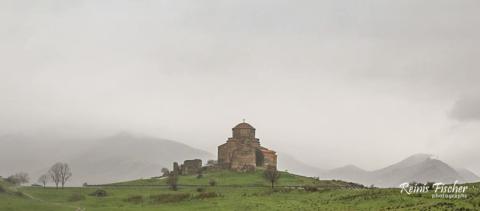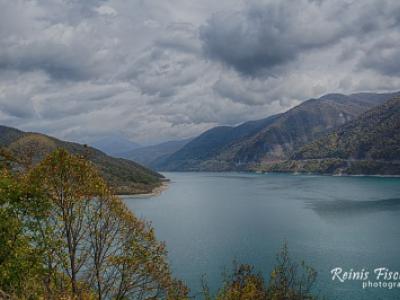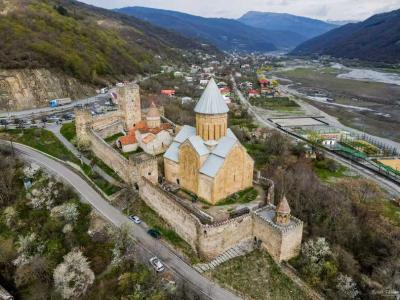Jvari monastery is a popular tourist destination in Georgia, and I believe there are two reasons of that - first it's located close to the nation's capital Tbilisi and second it offers a really scenic views to nearby city of Mtskheta and delta of Aragvi and Mtkvari rivers. Another reason to mention - the monastery is listed as a World Heritage Site by UNESCO.
First time I headed here was probably back in 2011, since then I have visited this place for some couple of other times.
Recently my blog got a new equipment - Canon EOS 1200D - and I decided it's best to start exploring a new camera here. With help of my good friend Johann I learned a few good techniques that day and I hope the photos featured on my blog will become more viewable and enjoyable.
Here are some photos I managed to capture at Jvari monastery:

Horse on pasture near Jvari monastery

Jvari monastery
Jvari Monastery stands on the rocky mountaintop at the confluence of the Mtkvari and Aragvi rivers, overlooking the town of Mtskheta, which was formerly the capital of the Kingdom of Iberia.
According to traditional accounts, on this location in the early 4th century Saint Nino, a female evangelist credited with converting King Mirian III of Iberia to Christianity, erected a large wooden cross on the site of a pagan temple. The cross was reportedly able to work miracles and therefore drew pilgrims from all over the Caucasus. A small church was erected over the remnants of the wooden cross in c.545 named the "Small Church of Jvari".

Parking lot near Jvari monastery

Rocks near Jvari

Dome inside Jvari
The present building, or "Great Church of Jvari", is generally held to have been built between 590 and 605 by Erismtavari Stepanoz I. This is based on an inscription on its facade which mentions the principal builders of the church: Stephanos the patricius, Demetrius the hypatos, and Adarnase the hypatos. Professor Cyril Toumanoff disagrees with this view, identifying these individuals as Stepanoz II, Demetre (brother of Stepanoz I), and Adarnase II (son of Stepanoz II), respectively.
The importance of Jvari complex increased over time and attracted many pilgrims. In the late Middle Ages, the complex was fortified by a stone wall and gate, remnants of which still survive. During the Soviet period, the church was preserved as a national monument, but access was rendered difficult by tight security at a nearby military base. After the independence of Georgia, the building was restored to active religious use. Jvari was listed together with other monuments of Mtskheta in 1994 as a UNESCO World Heritage Site.
However, over the centuries the structures suffered damage from rain and wind erosion and inadequate maintenance. Jvari was listed in the 2004 World Monuments Watch list by the World Monuments Fund.

Mtkvari and Aragvi delta near Mtskheta
A spectacular view from Jvari monastery towards Mtskheta town - I believe many tourists head here to take those amazing photos

View to Mtskheta town
Look how this ancient Georgian capital city looks like a toy city from here

Candle at Jvari monastery
I photographed this candle actually some 50 times, from different angles, with different shooting techniques and found following - to photograph a lighting candle is a great way to learn SLR photography

Inside Jvari monastery
The Jvari church is an early example of a "four-apsed church with four niches" domed tetraconch. Between the four apses are three-quarter cylindrical niches which are open to the central space, and the transition from the square central bay to the base of the dome's drum is effected through three rows of squinches. This "four-apses four-niches" church design is found in the architecture of Georgia, Armenia, and Caucasian Albania, and is often referred to as a "Hripsime-type plan" after its best known example, the church of St. Hripsime in Armenia. The Jvari church had a great impact on the further development of Georgian architecture and served as a model for many other churches.
Varied bas-relief sculptures with Hellenistic and Sasanian influences decorate its external façades, some of which are accompanied by explanatory inscriptions in Georgian Asomtavruli script. The entrance tympanum on the southern façade is adorned with a relief of the Glorification of the Cross, the same façade also shows an Ascension of Christ.
Uncertainty over, and debate about, the date of the church's construction have assumed nationalist undertones in Georgia and Armenia, with the prize being which nation can claim to have invented the "four-apsed church with four niches" form.



